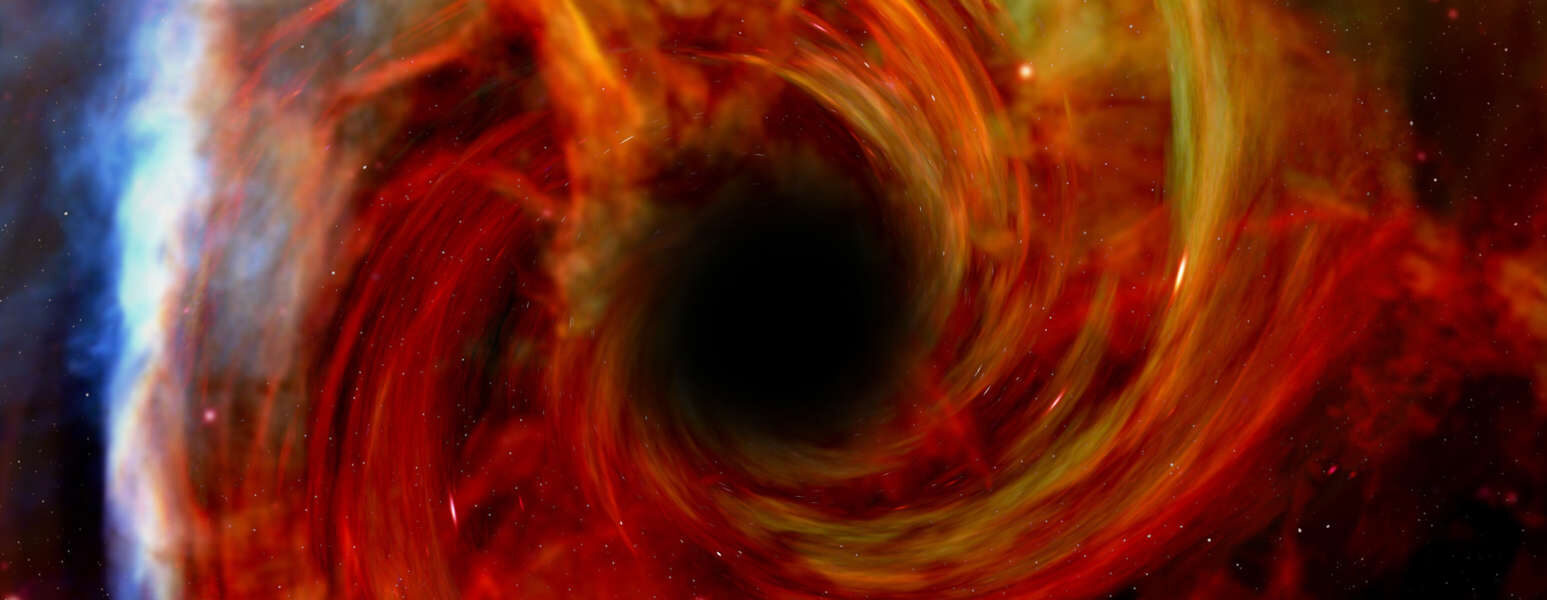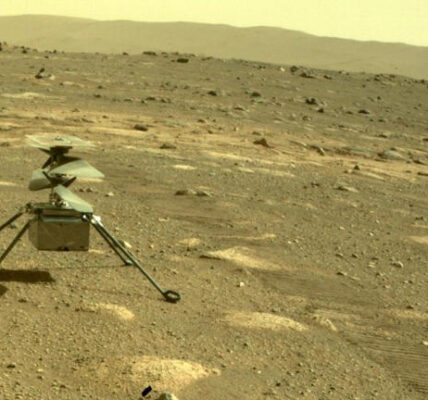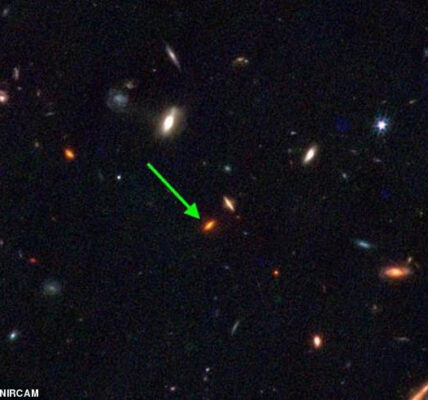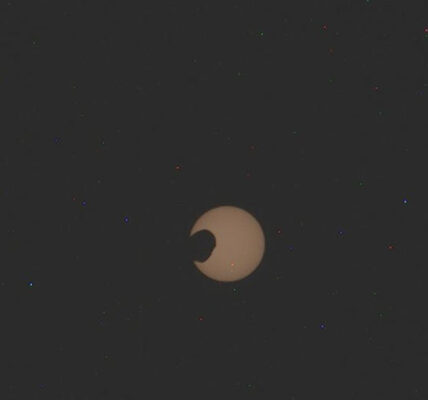“Early Universe Supermassive Black Hole 🌌: 5 Mind-Blowing Secrets Revealed!”
Early Universe Supermassive Black Hole🌌
Explore the fascinating discovery of a supermassive black hole in the early universe. Learn about its red hue, rapid growth, and the mysteries it unravels about our cosmos.
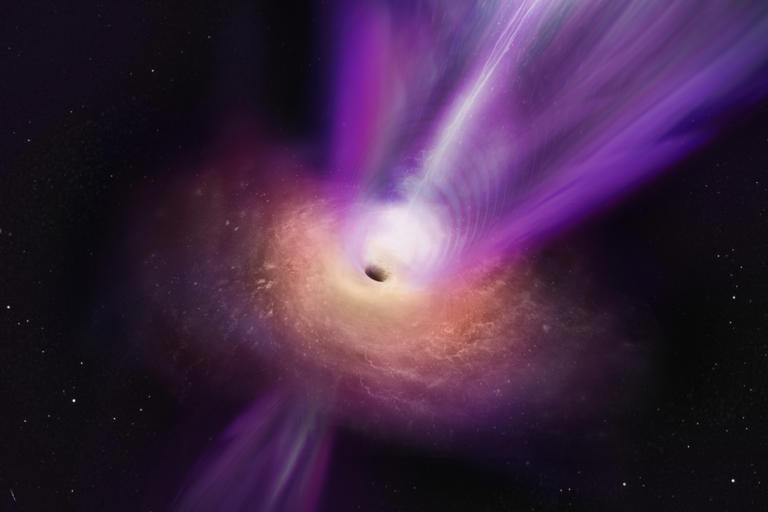
Unveiling the Secrets of an Early Universe Supermassive Black Hole
In the vast expanse of the cosmos, astronomers using the James Webb Space Telescope have made a groundbreaking discovery: a supermassive black hole lurking in the shadows of the early universe. Let’s delve into this cosmic marvel, understanding its red hue, rapid growth, and the profound mysteries it reveals about the universe’s infancy.
The Red Hue of Ancient Enigmas
As we peer billions of light-years into the past, the light emitted by celestial objects undergoes a transformation. The expanding universe causes light to stretch, resulting in a redshift phenomenon. This effect gives the supermassive black hole an “extremely red” appearance, hinting at its ancient origins, just 700 million years after the Big Bang. It’s akin to observing a relic from the universe’s infancy, shrouded in the cosmic red glow of its surroundings.

A Black Hole’s Weighty Secret
What adds to the intrigue is the astonishing mass of this supermassive black hole. Weighing in at approximately 40 million times the mass of our Sun, it dwarfs the galaxy it inhabits. This unexpected heft challenges our understanding of black hole formation and growth in the early universe, prompting astronomers to reassess existing theories.
A voracious appetite for cosmic matter
Like an insatiable cosmic behemoth, the supermassive black hole is voraciously feeding on the gas and dust swirling around it. This process, known as accretion, fuels its relentless growth and underscores the dynamic interplay between black holes and their cosmic surroundings. The discovery of this ravenous appetite offers a glimpse into the cosmic buffet that sustains these enigmatic entities.
Quasar-like Brilliance: Illuminating the Darkness
The red dots captured by the James Webb Space Telescope initially puzzled astronomers. These compact yet luminous objects hinted at a quasar-like phenomenon—a supermassive black hole surrounded by an accretion disk of gas and dust. These structures radiate with such intensity that they outshine entire galaxies, marking their presence as cosmic beacons in the darkness of space.

Einstein’s Lens: Unveiling the Invisible
Albert Einstein’s theory of general relativity provides the key to unlocking the hidden mysteries of the cosmos. Through gravitational lensing, massive objects warp the fabric of spacetime, bending light and revealing hidden cosmic treasures. In this instance, a galaxy cluster acts as a gravitational lens, amplifying the light from distant background galaxies. This cosmic sleight of hand unveils the elusive supermassive black hole, hidden amidst the cosmic tapestry.
The Chicken and Egg Conundrum of Cosmic Evolution
The discovery of this ancient supermassive black hole deepens the cosmic conundrum surrounding the coevolution of galaxies and black holes. Did galaxies form around black holes, or did black holes emerge within evolving galaxies? The intricate dance between these cosmic entities remains shrouded in mystery, inviting astronomers to unravel the enigmatic origins of the cosmos.
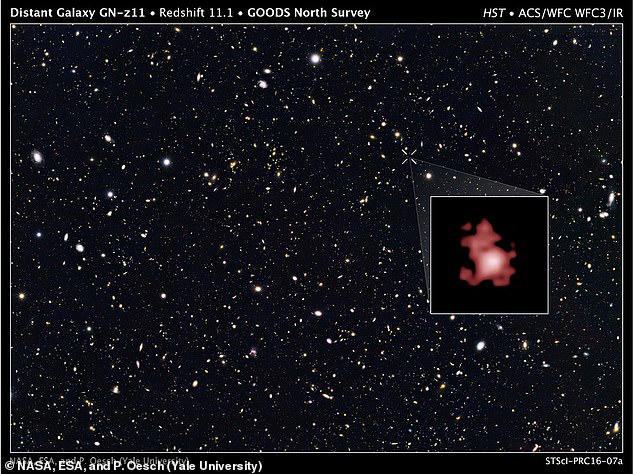
Pioneering Discoveries and Future Frontiers
The James Webb Space Telescope continues to revolutionize our understanding of the universe, unveiling cosmic wonders that defy imagination. As we gaze into the depths of space, each discovery propels us closer to unraveling the cosmic mysteries that have captivated humanity for millennia. With each red dot observed, a new chapter in the cosmic saga unfolds, beckoning us to explore the frontiers of the unknown.
Conclusion: Illuminating the Darkness
In the vast expanse of the cosmos, the discovery of an early universe supermassive black hole serves as a beacon of enlightenment amidst the darkness. Its red hue, voracious appetite, and enigmatic origins offer a glimpse into the cosmic drama unfolding across billions of light-years. As we journey deeper into the cosmos, each discovery unveils new layers of complexity, inviting us to explore the boundless wonders of the universe.
Through the lens of the James Webb Space Telescope, humanity embarks on a voyage of discovery, charting the uncharted realms of space and time. With each observation, we inch closer to unlocking the secrets of the universe and our place within it. As we stand on the precipice of discovery, the cosmos beckons us to explore its infinite mysteries, igniting a spark of curiosity that illuminates the darkness of the unknown.
